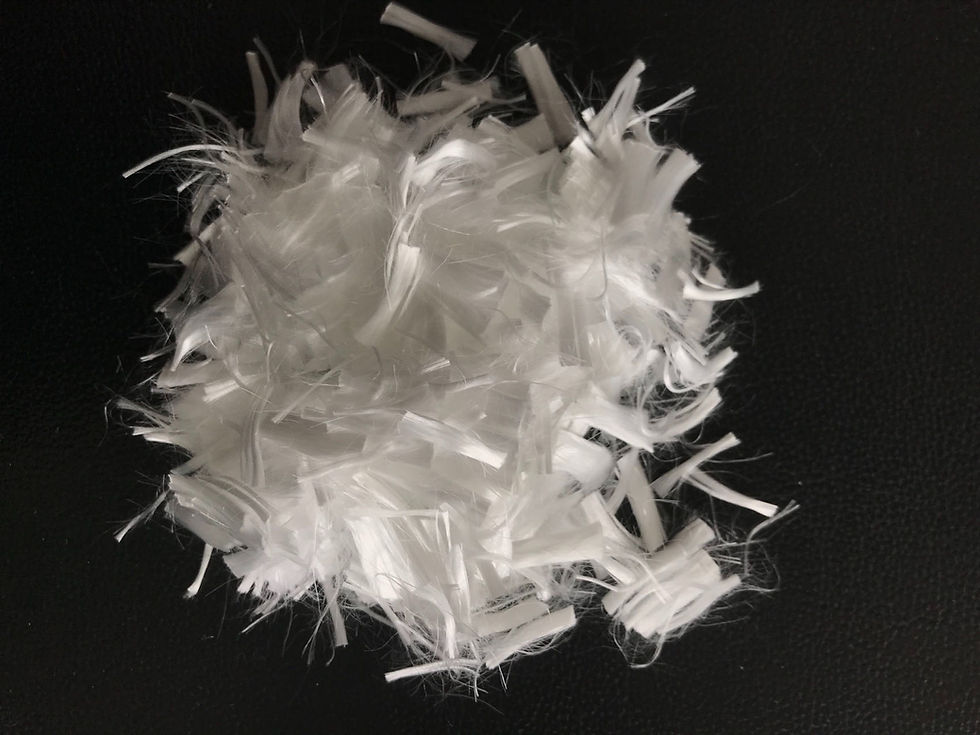The Science Behind PP Fiber Reinforced Concrete
- pioneerfiber

- Jun 23
- 2 min read
Updated: Nov 17
Information Tags
• Type: 4-minute read
• Audience: Construction professionals, engineers, architects, contractors

Introduction
Polypropylene (PP) fiber has revolutionized concrete technology by providing an effective means of improving strength, durability, and overall performance. This article delves into the science behind PP fiber reinforcement, revealing how this advanced material enhances concrete structures and extends their lifespan.
Understanding Polypropylene Fiber Properties
PP fiber is a synthetic, thermoplastic polymer with excellent chemical and physical properties. It is lightweight, non-corrosive, and resistant to alkalis and acids, making it ideal for concrete applications. The unique characteristics of PP fiber allow it to integrate seamlessly into the concrete matrix, forming a uniform distribution of reinforcement throughout the structure.
Mechanism of Crack Resistance
Cracking is a common challenge in concrete, typically resulting from shrinkage, thermal stress, or external loads. PP fibers address this issue by acting as micro-reinforcements that control crack propagation. When the concrete begins to shrink or experience tension, the PP fibers absorb and distribute the stress, preventing the formation of visible cracks and enhancing long-term durability.
Enhanced Toughness and Flexural Strength
The inclusion of PP fiber in concrete not only controls cracking but also significantly improves toughness and flexural strength. This is achieved by the fiber’s ability to bridge microcracks and provide resistance to external forces. The result is a more ductile and resilient concrete structure that can better withstand heavy loads, vibrations, and impact.
Resistance to Environmental Degradation
Concrete is often exposed to harsh environmental conditions, including moisture, freeze-thaw cycles, and chemical attack. PP fiber’s non-corrosive and chemically resistant properties play a vital role in enhancing the concrete’s ability to resist these factors. By reducing permeability and protecting the matrix, PP fiber effectively prolongs the service life of concrete structures.
Applications in Modern Construction
PP fiber reinforced concrete is widely used in diverse construction projects, including:
• Industrial floors requiring high durability and wear resistance.
• Tunnel linings and shotcrete for enhanced stability and crack control.
• Precast elements where dimensional stability and reduced cracking are critical.
• Infrastructure projects exposed to aggressive environments.

Conclusion
The science behind PP fiber reinforced concrete highlights its pivotal role in modern construction. By enhancing crack resistance, toughness, and environmental resilience, PP fiber transforms ordinary concrete into a robust and long-lasting material, meeting the demands of today’s infrastructure challenges.
Explore PIONEER’s range of concrete reinforcement fibers and how they improve concrete properties. Visit our website: www.pioneerfibre.com
Micro fiber >> Learn More
Macro fiber >> Learn More
Steel fiber >> Learn More
Asphalt fiber >> Learn More
Contact us today to request samples, technical data, or a custom solution for your project.
Email: Sales@pioneerfibre.com | Email: Support@pioneerfibre.com
WhatsApp: +1 (929) 569-9989 | +86 151-6240-5106





Comments